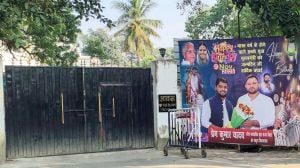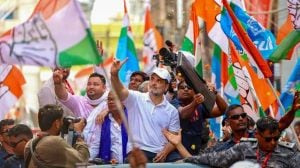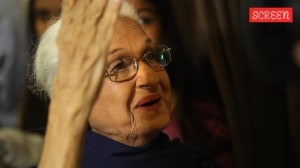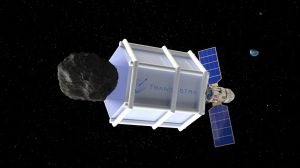Godfathers den
The mafia is finito here. But in Palermo,capital of Sicily,there are many more rakish delights to discover
The mafia is finito here. But in Palermo,capital of Sicily,there are many more rakish delights to discover
The receptionist at the hotel in Palermo cannot find our bookings. He fingers our passports nervously and fumbles with the keyboard of his computer. India? Is it near Sri Lanka? he asks. This perhaps must be the first time anyone identified formidable India by its little neighbour. Indignation is just about to get the better of our politeness,until we glance at the lounge mirror. The penny drops. How alike we look,Indian Tamils and our brethren from the island nation. Being so numerous and ubiquitousthey run groceries,hawk DVDs of atrocious Tamil movies made in Kollywood and manage cyber cafes in most European citiesSri Lankans have a visibility that Indians cant match,especially when Sicily is not on any Indian tour itinerary. So we keep the smugness in check and explain,somewhat patronisingly,that India is in the neighbourhood of Sri Lanka,but is a large developing country like China,thank you.
Sicily was very much on our map though,since we had planned to take the road less travelled. We headed south from Rome to Naples and after our travels in Pompeii,Positano and Amalfi,were back in Naples to board a ferry to Palermo,the capital of Sicily. We reached after a 10-hour sail down the Mediterranean,bedraggled and sleep-deprived. But,mercifully,we had left the crowds and queues behind in Florence,Vatican and Venice.
First stop in Palermo is Via Maqueda,Palermos commercial artery. Moorish splendour peeps from behind weather-worn baroque facades,which the Spanish ,Palermos rulers in the 15th century,imposed on sensible Arab architecture. Arches,gateways,fountains and gargoyles are scattered among crumbling apartment blocks. Palermo seems to have borne with remarkable dignity the depredations and excesses of its successive colonisers Phoenicians,Normans,Arabs,German,French and the Spanish. The citys streets mirrors this mosaic-like diversityyou can spot people of Arab,Berber,Negroid,Latino or mixed lineage,in every conceivable complexion,height and girthand a babel of tongues rings out everywhere.
So much so that the city seems barely Italian,its national identity peeled off like old plaster. Giuseppe Garibaldi must be turning in his grave. The Italian national hero had taken up the task of unifying disparate nationalities into what we know today as Italy,and he did so from Palermo. Politically,he succeeded in integrating Sicily into Italy. But as for taming the fierce Sicilians,thats another story.
When in Sicily,you cant but be on the lookout for Vito Corleone,or should we say Marlon Brando,look-alikes. Although the mafiosi moved to set up shop in New York decades ago,we hope to glimpse some members of the extended family riding off in stylish sports cars or attending extravagant weddings in one of the numerous churches that dot Palermo. No such luck. A discreet inquiry at the local pizzeria confirms our disappointment. Mafia in Sicily is finito, says the shopkeeper in lilting English. The mob has moved to Naples where it is forced to hunt solo rather than in family packs.
So we visit lovely churches,the baroque square of Quattro Canti and the grand Monreal,a Benedictine cloister on the outskirts of Palermo. The city owes its splendour to its Norman ruler William II and its infamy to the many conspiracies that were hatched here.
Todays Palermo though,is delightfully down-to-earth. What we like best about it is that it is full of shops that sell useful everyday items,unlike the sleek stores in our cities which stock rows and rows of stuff without which we can live our entire lives happily forever. And there are many Chinese shops that sell ridiculously-priced household goods of indifferent quality. There is even a mini Chinatown in Palermo.
But wait,where Chinese go,can South Asians be far behind? Almost every other shop on Via Roma and Via Marsala is owned by Bangladeshis and all of them sell jewellery,fake as well as original. Chunky coral necklaces and delicate turquoise strings vie for your attention alongside rosaries made of plastic and glass beads. There are even stalls selling samosas and jalebi,presumably to cater to the shopkeepers. All of them speak fluent Italian but their Bengali is a bit halting. Their Hindi sounds better. So we carry on an animated conversation in Hindi and learn that virtually all of them came to Sicily from the Middle East. Ahmed came from Saudi Arabia and his Bengali wife works as a housekeeper for an Italian family. He has been in Palermo for 10 years now and is all praise for the carabieneri (police) whom he calls friend. If your papers are ok,the police are your friend and thats much more I can say for my own country, he says. Ali,another shopkeeper,has a Bangladeshi wife back home and an 18-month-old son. He would like to return to Bangladesh to bring him up. Yeh log ajeeb hai. If they have 10 euros,they spend 12 without a care for tomorrow, he says. Our accented Bengali earns us a handsome discount on coral strings.
Palermos character lies in its multi-cultural,multi-ethnic illegal immigrants who populate the back-alleys of the inner city. A walk through its streets brings you face-to-face with Tunisians,Moroccans,Libyans,not to mention Arabs and Sri Lankan Tamil refugees. The district exudes a raw energy,much like Delhis Chandni Chowk. No wonder,we felt so much at home.
Fast Facts
How to get there: Direct daily flights from Rome,Paris,London and a host of other European destinations; ferries ply between Palermo and Naples,Livorno,Genoa and Valencia (Spain); trains and long-distance buses available from Rome.
When to go: Through the year,except July and August when it can get very hot.
What to do: Walk through Albergheria,the immigrant locality. Visit Monreale,Palazzo Reale (Parliament) Il Capo,a magnificient church built by its Norman kings,Quattro Canti. Visit the mission established by Mother Teresa at La Kalsa. Check out the museums and churches. Take a day trip to Ustica,60 km north of Palermo,and go snorkeling.
Where to stay: Numerous hotels to suit all budgets.
What to eat: Mouthwatering pizzas,couscous,panelle (chickpea fritters),pasta con le sarde,cannoli and excellent Sicilian wine which come in cartons with a tap!
Local transport: Walk or take a tram or trolleybus.
What to buy: Sicilian puppets,coral and turquoise jewellery,ceramic tiles.


- 01
- 02
- 03
- 04
- 05





























